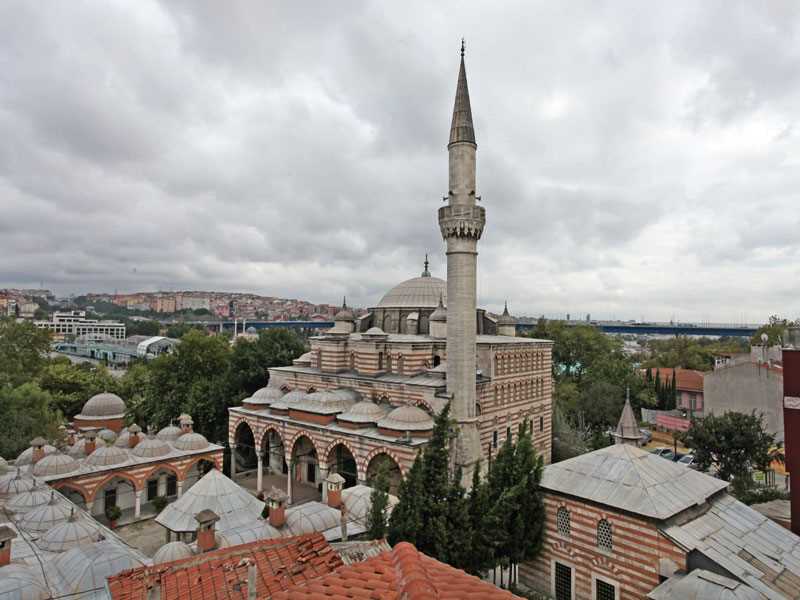One of the mosques built after the conquest of Constantinople. It is located in the Aminonu district of Al Fateh province in the European section of Istanbul.
The architectural complex Sinan Ateeq was designed and built by order of Minister Mahmud Pasha (1463 AD - 1466 AD) during the reign of Sultan Mohamed El Fateh, and he gave it his name.
The mosque was built in the form of a complex consisting of: mosque, bath, emirate, school for boys, Khan, and cemetery. The mosque was built according to the building style of the early Ottoman period. The area of the main section of the mosque is 12 x 26 m covered with two blocks diameter 10.45 m and 11 m. Where the complex consists of 18 dome including the two domes. Most of the interior inscriptions of the mosque date back to the 18th century, and the royal residence of 1828. Above the tribal door of the mosque is the date of its construction. On the left and right sides of the sanctuary, which is covered with two large domes, are two places, each covering three small domes. The marble on the entrance door is one of the first samples in Istanbul. The minaret of the mosque was reconstructed in order to restore the classical style and thus lost its original lines. The tomb, which was built in the shape of an octagonal plan, contains the tomb of Mahmoud Pasha.
In 1753, due to the fire that broke out in the market, the complex was exposed to large losses and lost a large part of its departments, most notably the emirate (the administration) and the school boys. Only the mosque, the bath, the cemetery and the Khan of the Corcoller, the only surviving form of the 15th century, have reached our days.
It is noteworthy that the most important thing that came to us today is the bathroom, which dates back to 1466 and is the oldest bath in Istanbul, as well as the water that is located in the courtyard of the mosque, which was created by Mustafa Agha Director of House of happiness. The rest of the school is one classroom.








